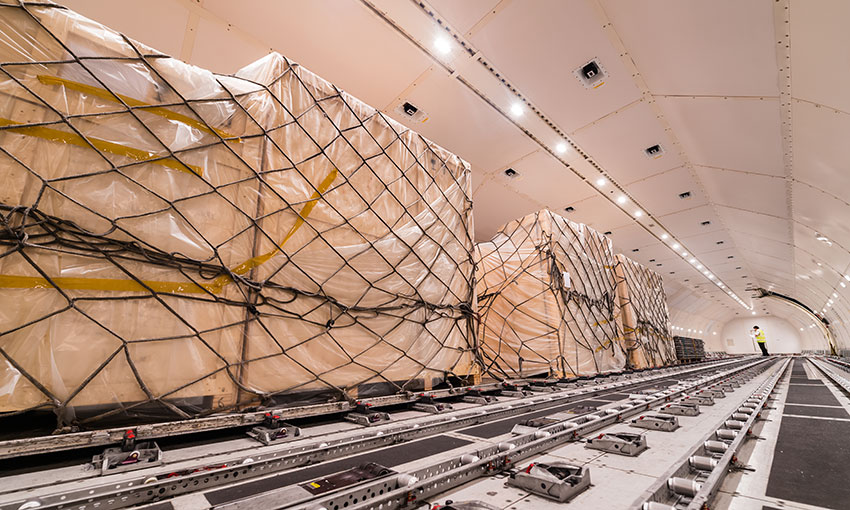GLOBAL air cargo demand rebounded in 2023, according to new data from the International Air Transport Association.
IATA reported a particularly strong fourth quarter performance despite economic uncertainties, with a 10.8% surge in December closing 2023 near 2022 levels.
Full-year demand reached a level slightly below that of 2022 and 2019.
Global full-year demand in 2023, measured in cargo tonne-kilometres, was down 1.9% compared with 2022. Compared with 2019, it was down 3.6%.
Capacity in 2023, measured in available cargo tonne-kilometres, was 11.3% above 2022. Compared with 2019 (pre-covid) levels, capacity was up 2.5%.
December 2023 saw an “exceptionally strong” performance: global demand was 10.8% above 2022 levels, which was the strongest annual growth performance over the past two years. Global capacity was 13.6% above 2022 levels.
IATA noted global cross-border trade recorded growth for the third consecutive month in October, reversing its previous downward trend.
“Despite political and economic challenges, 2023 saw air cargo markets regain ground lost in 2022 after the extraordinary covid peak in 2021,” IATA director general Willie Walsh said.
“Although full year demand was shy of pre-covid levels by 3.6%, the significant strengthening in the last quarter is a sign that markets are stabilising towards more normal demand patterns.
“That puts the industry on very solid ground for success in 2024. But with continued, and in some cases intensifying, instability in geopolitics and economic forces, little should be taken for granted in the months ahead.”
IATA also noted air cargo experienced a modest rise in demand and yields in November and December due to disruptions in the Red Sea.
“The recent disruption to maritime routes in the Red Sea has seen some shippers pivot to air cargo. The increased demand saw a spike in air cargo yields on related trade lanes.
“A similar spike is expected in January as disruptions intensified. While not all cargo is suitable for air transport, it is a vital option for some of the most urgent shipments in extraordinary circumstances. And that is critical to the continuity of the global economy.”
Regional performance
Asia-Pacific airlines posted a 0.9% increase in demand in 2023 compared with 2022 and a capacity increase of 28.5%. In December, airlines in the region recorded the best performance of all regions, posting an 18.5% increase in demand compared with 2022. Capacity increased 31.1% during the same period.
North American carriers reported the “worst” year-on-year performance of all regions, with a 5.7% decrease in demand in 2023 compared to 2022 and a capacity increase of 0.3%. In December airlines in the region reported a 2.0% decrease in demand, compared with 2022. Capacity increased 2.4% during the same period.
European carriers posted a 3.9% decrease in demand in 2023 compared with 2022. During the same period, airlines posted a capacity increase of 4.5% for both global and international operations. In December, airlines in the region posted an 8.6% increase in compared with 2022. Capacity increased 7.4% during the same period. Airlines in the region continued to be most affected by the war in Ukraine.
Middle Eastern carriers reported an increase in demand of 1.6% for global and international demand in 2023 compared with 2022 and an increase in capacity of 13.5%. In December airlines in the region posted an 18.3% increase in demand for both global and international operations compared to 2022. Capacity increased 17.7% during the same period.
Latin American carriers posted the strongest year-on-year performance of all regions, with a 2% increase in demand in 2023 compared with 2022. During the same period, airlines posted a capacity increase of 13.2%. In December airlines in the region posted growth in demand of 6.4% compared with 2021. Capacity grew 3.5% during the same period.
And African airlines reported a decrease in demand of 1.8% in 2023 compared with 2022 and an increase in capacity of 5.6%. In December airlines in the region posted the weakest performance of all with a 1.2% decrease in demand compared with 2021. Capacity grew 7.4% during the same period.

